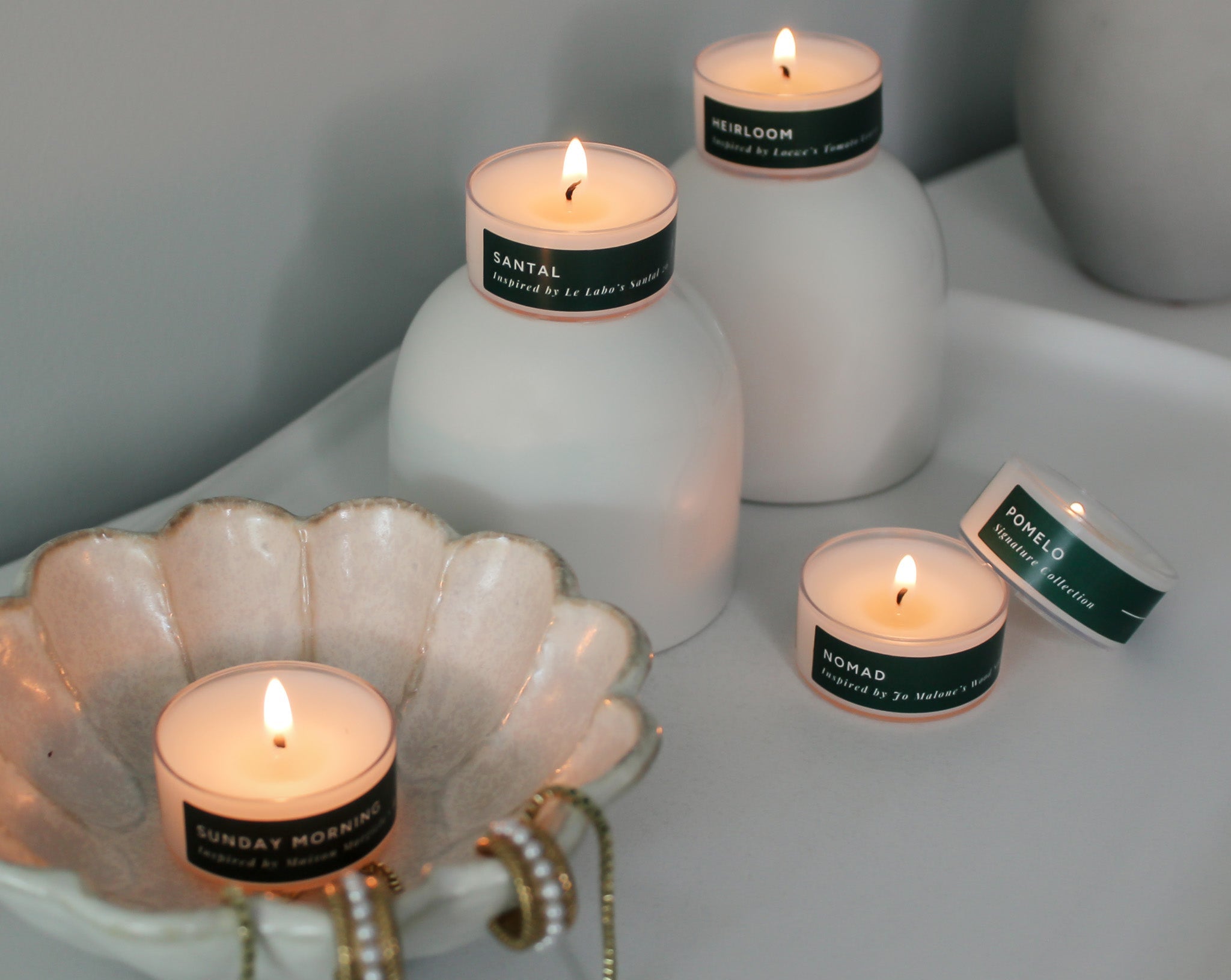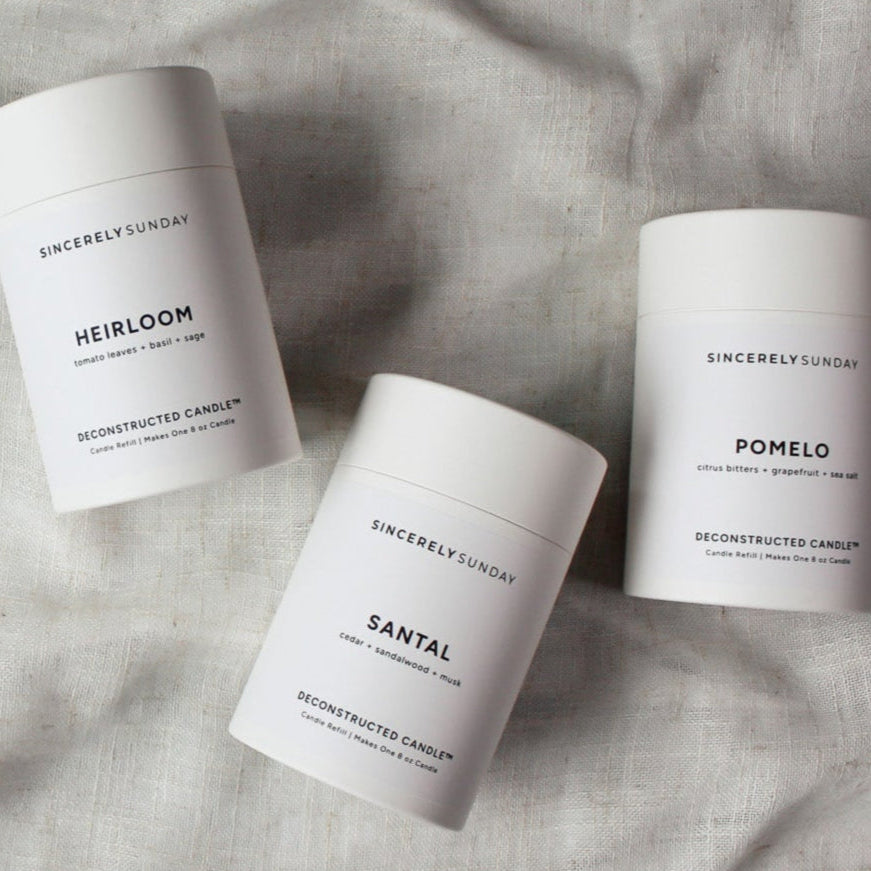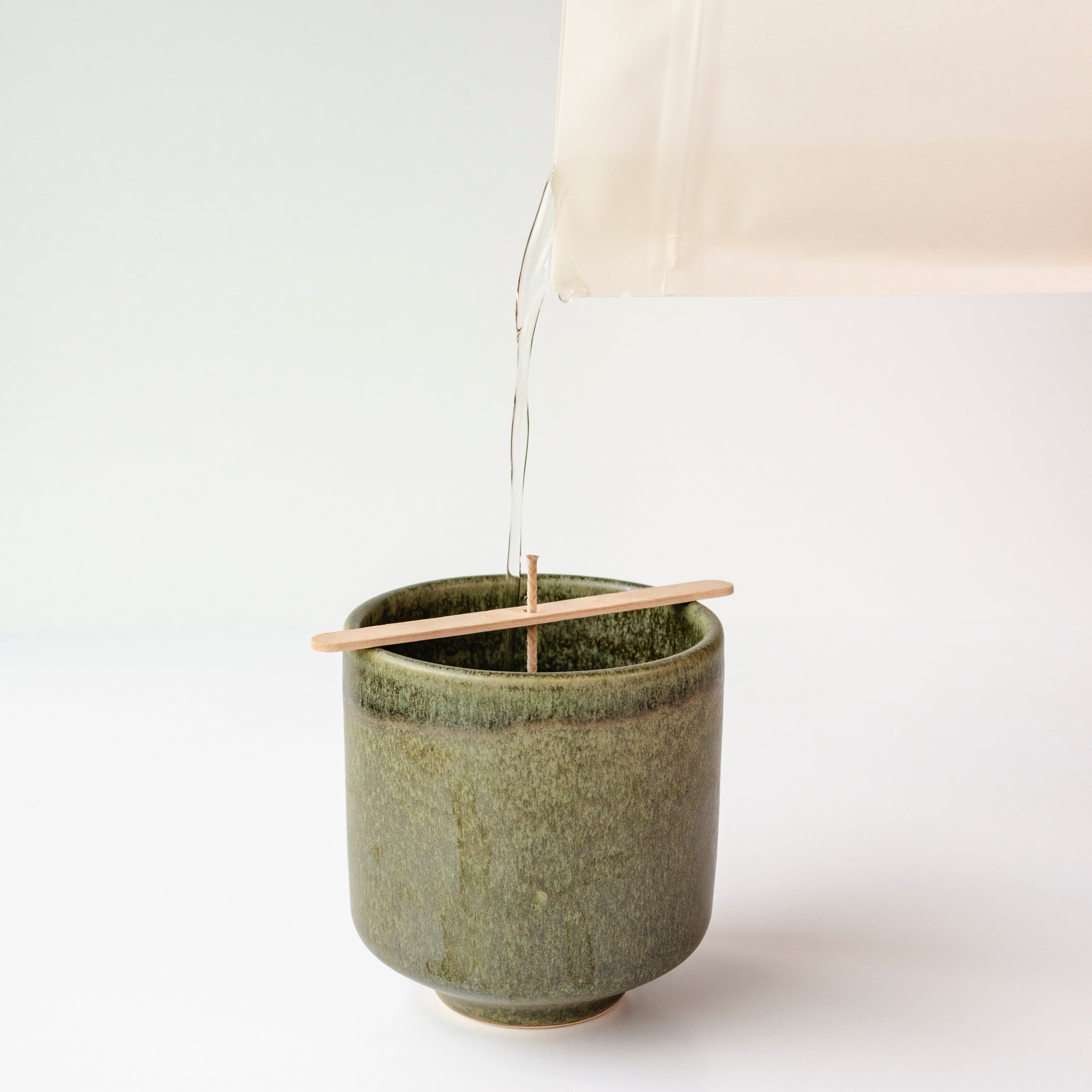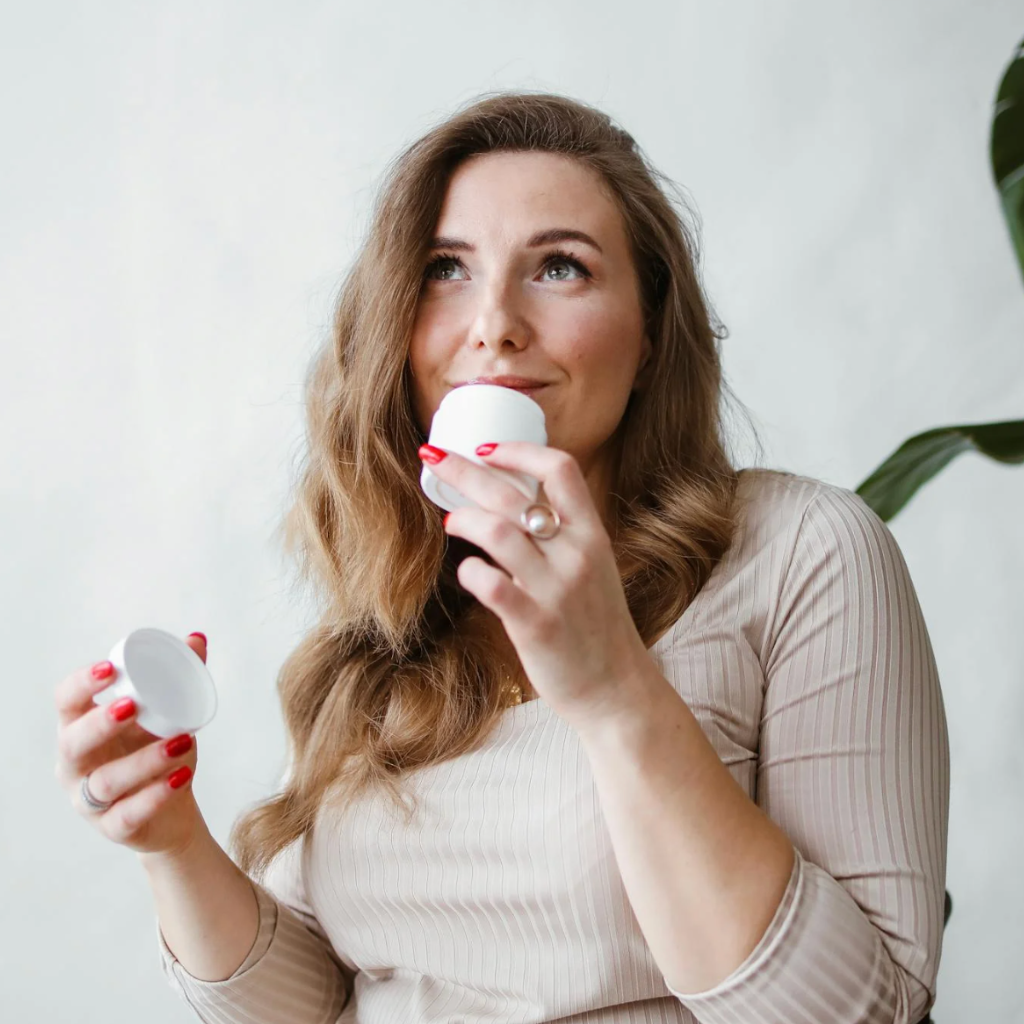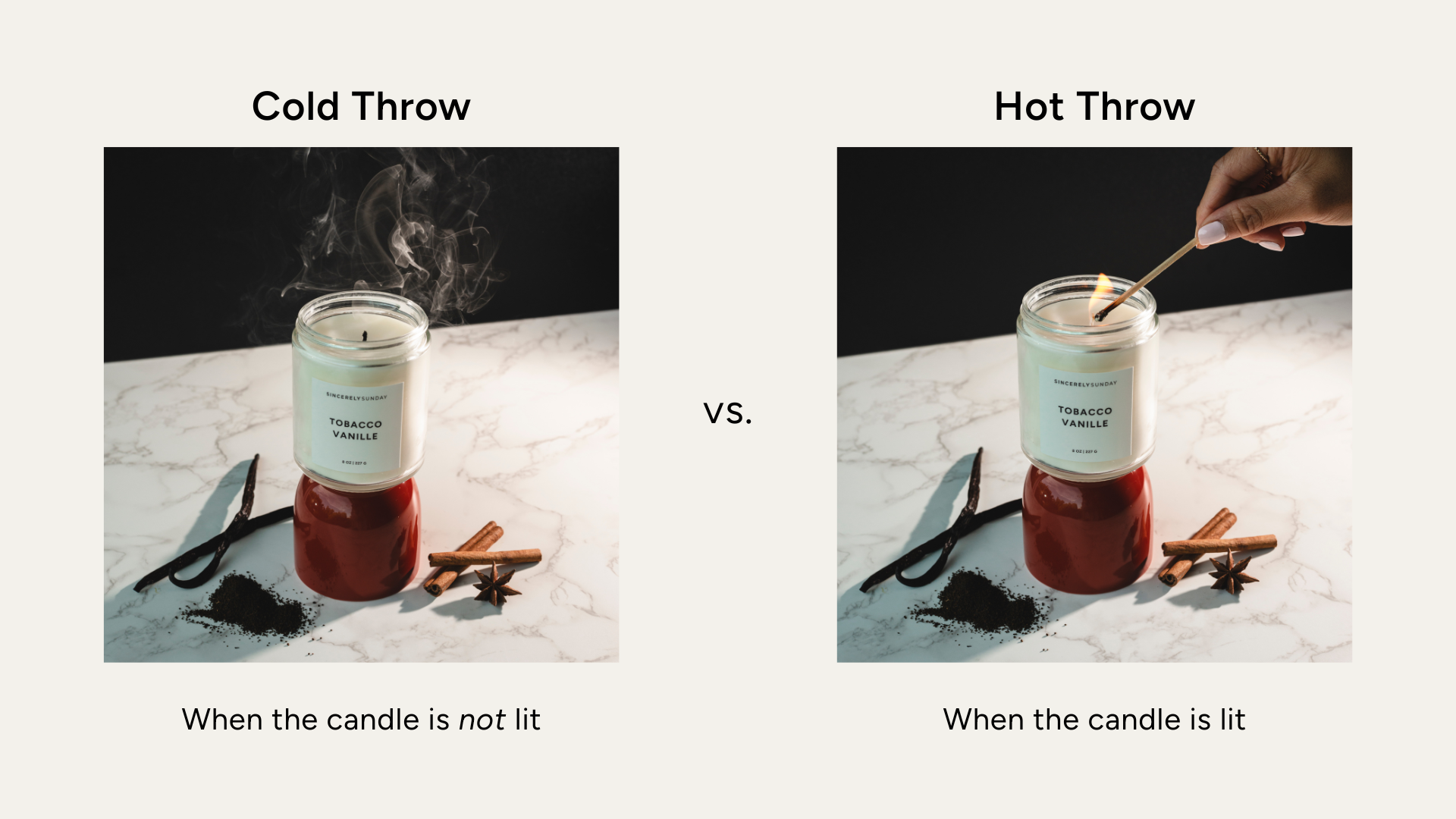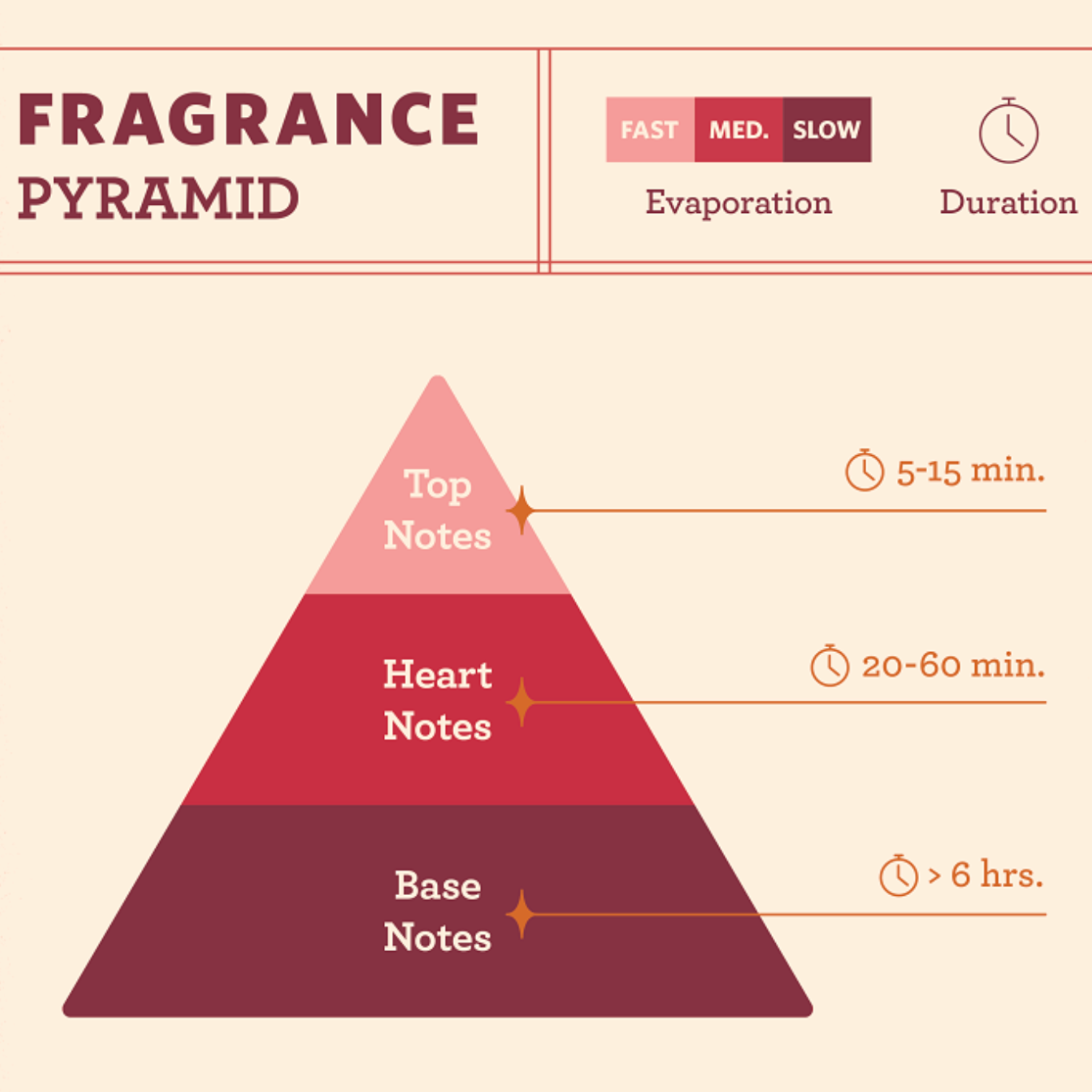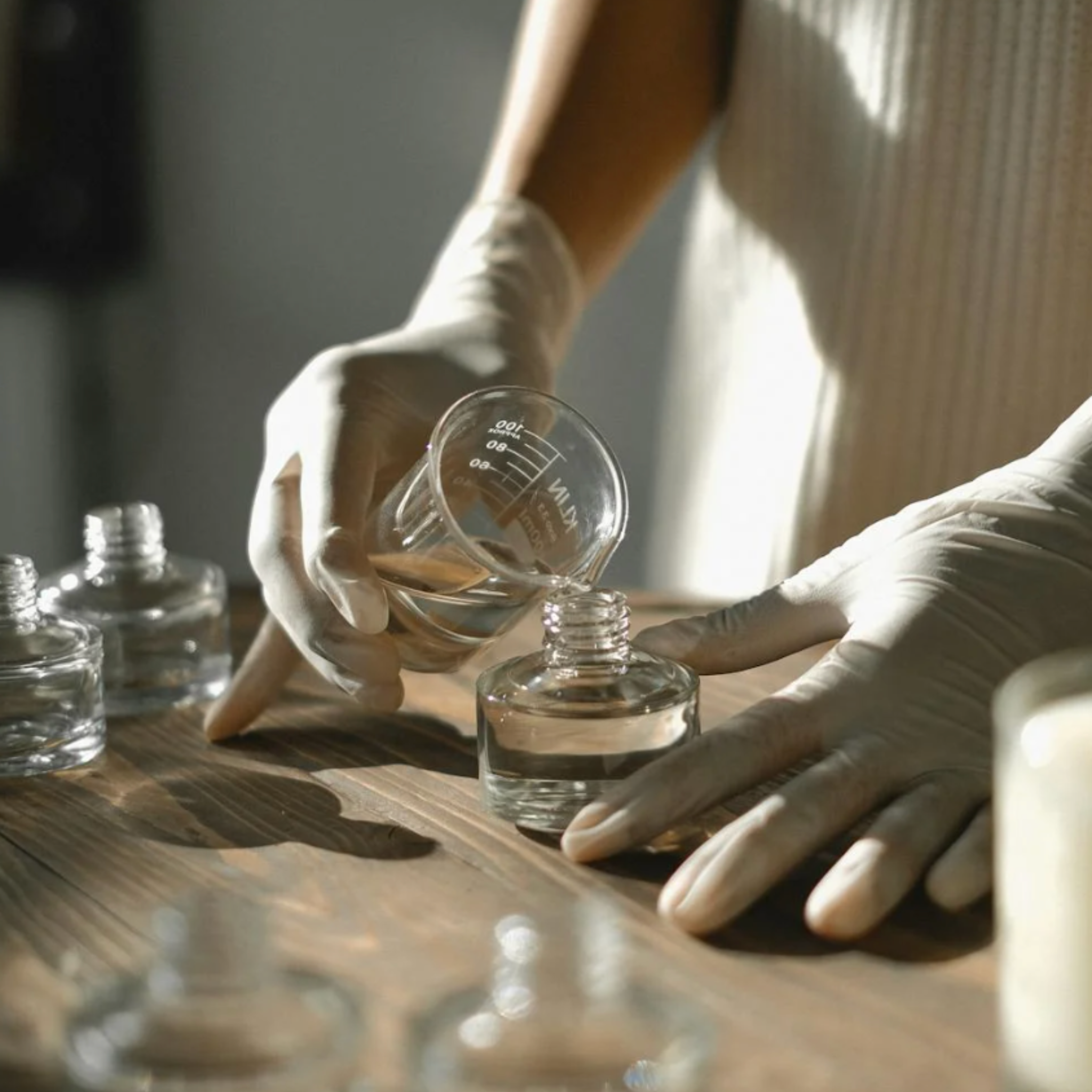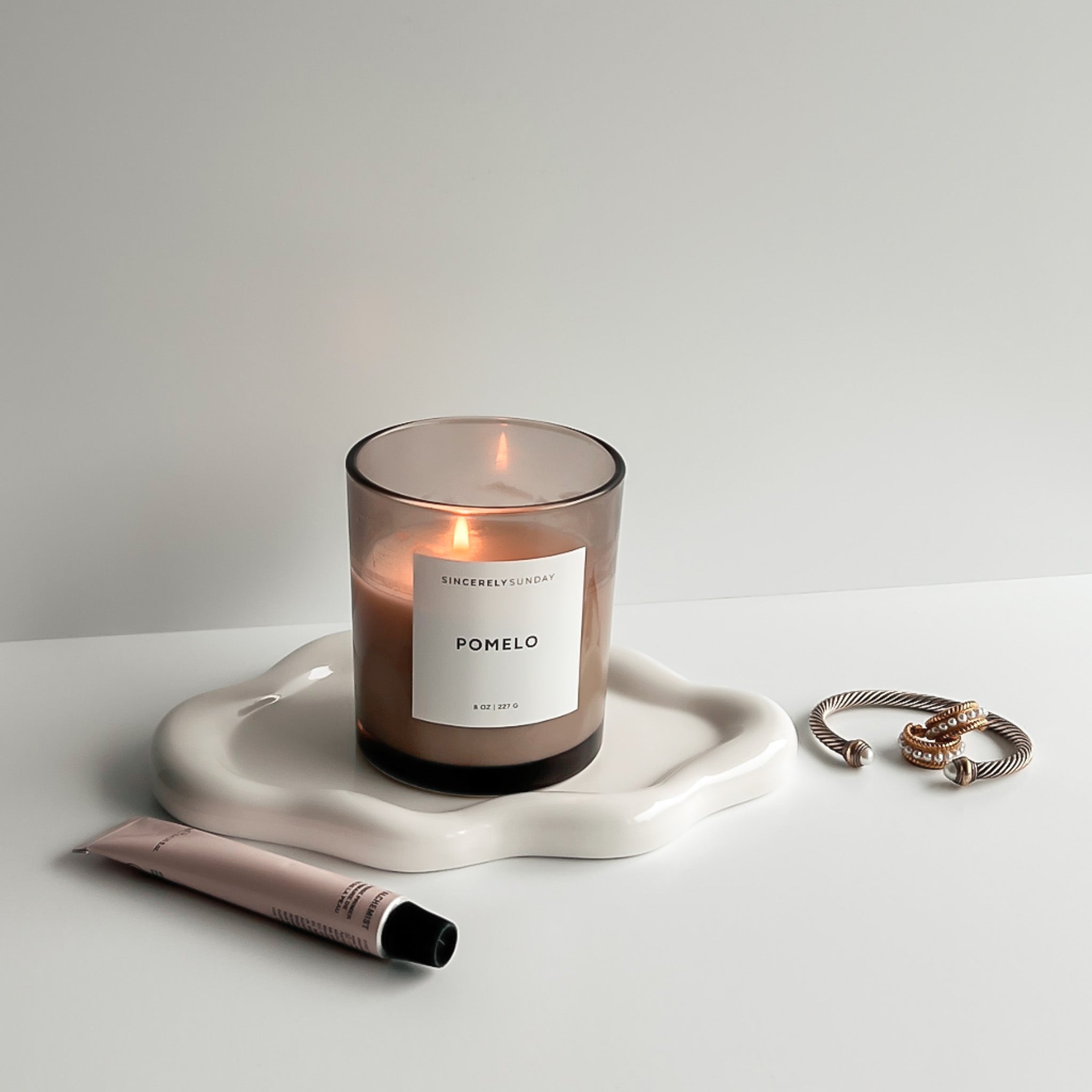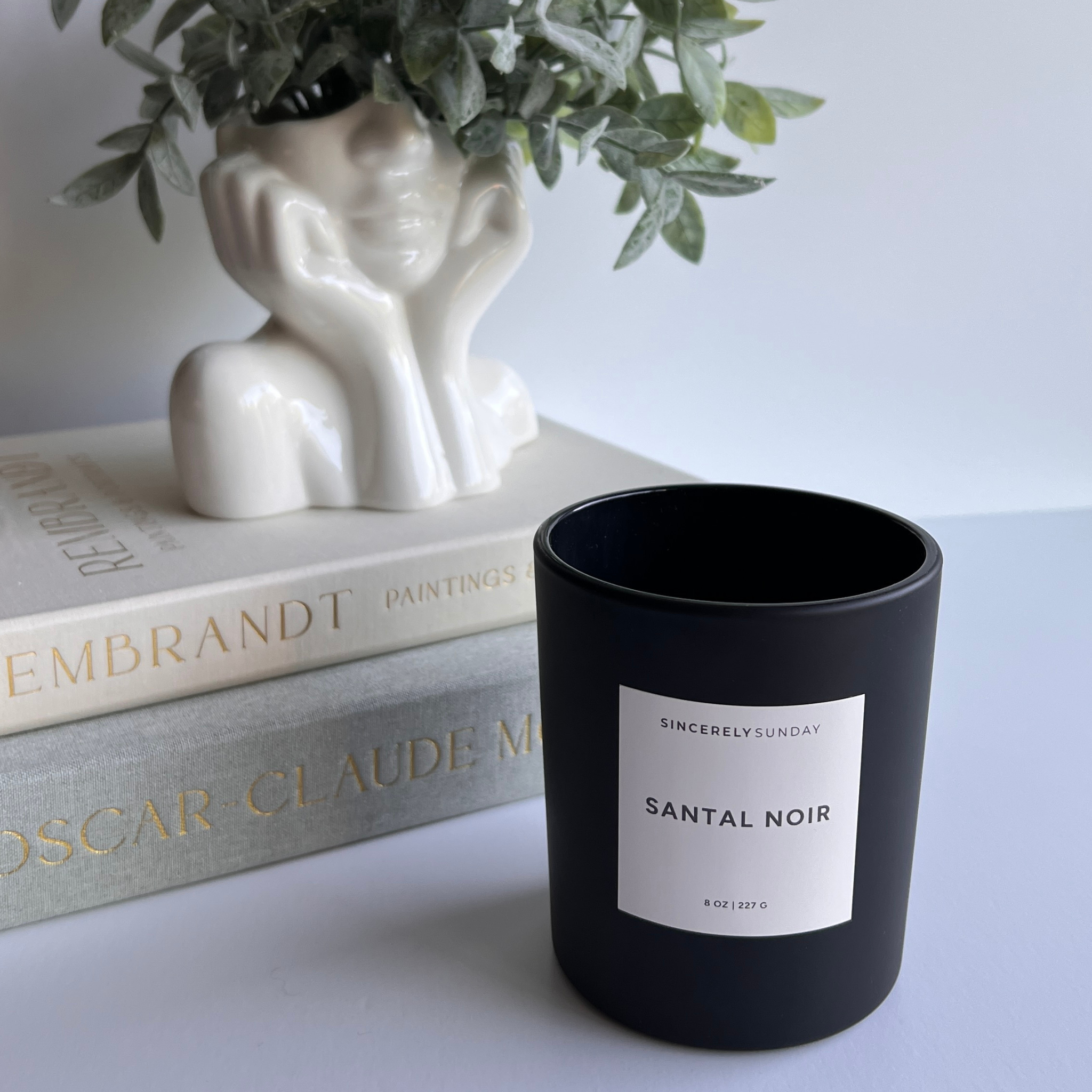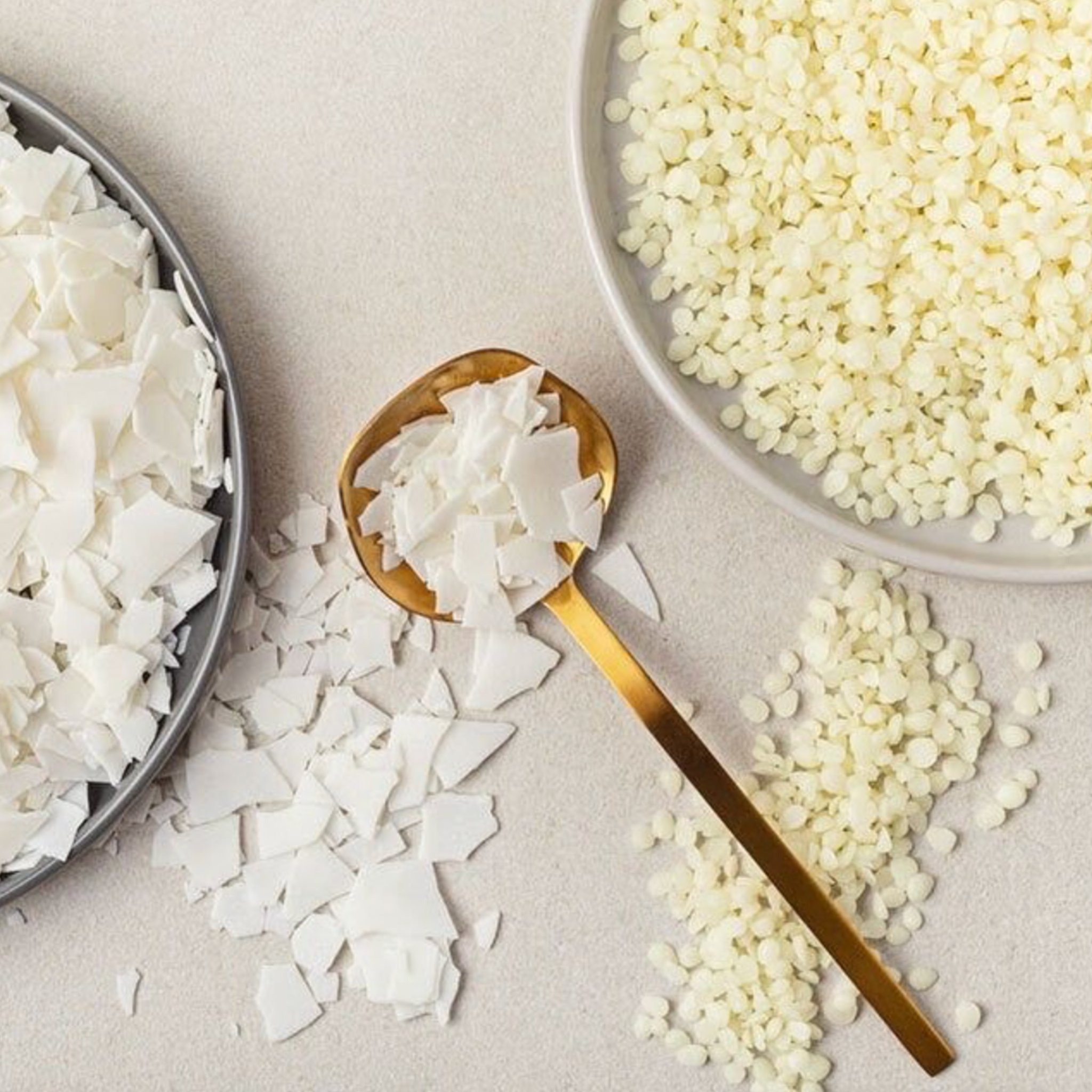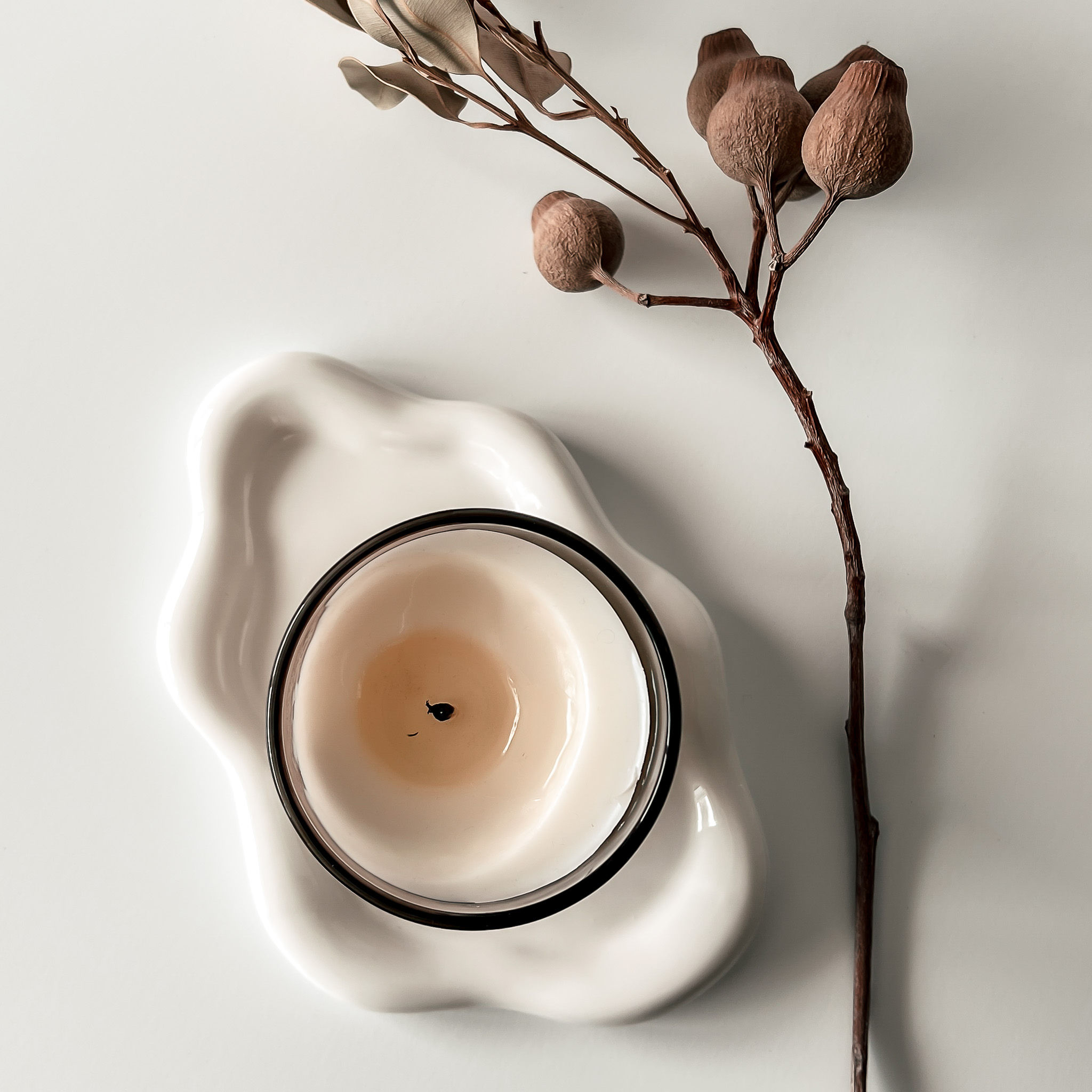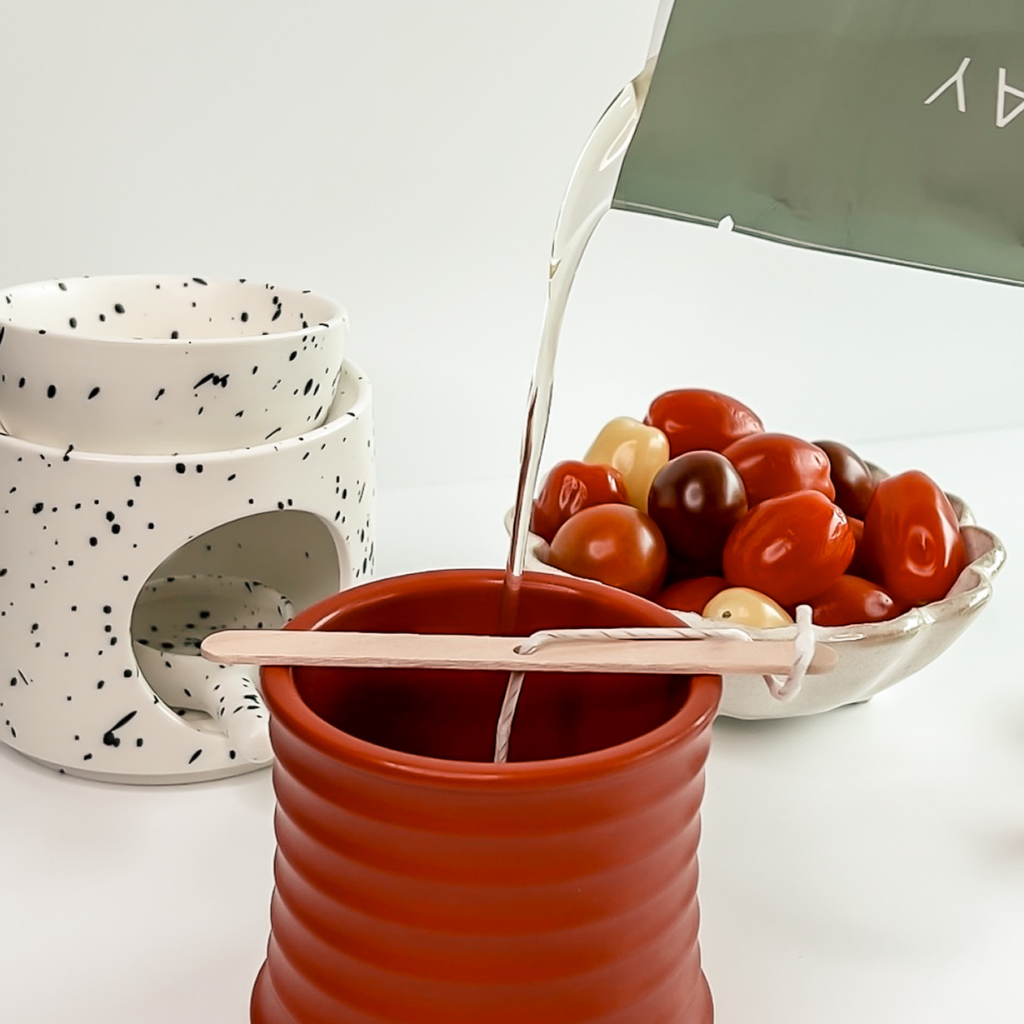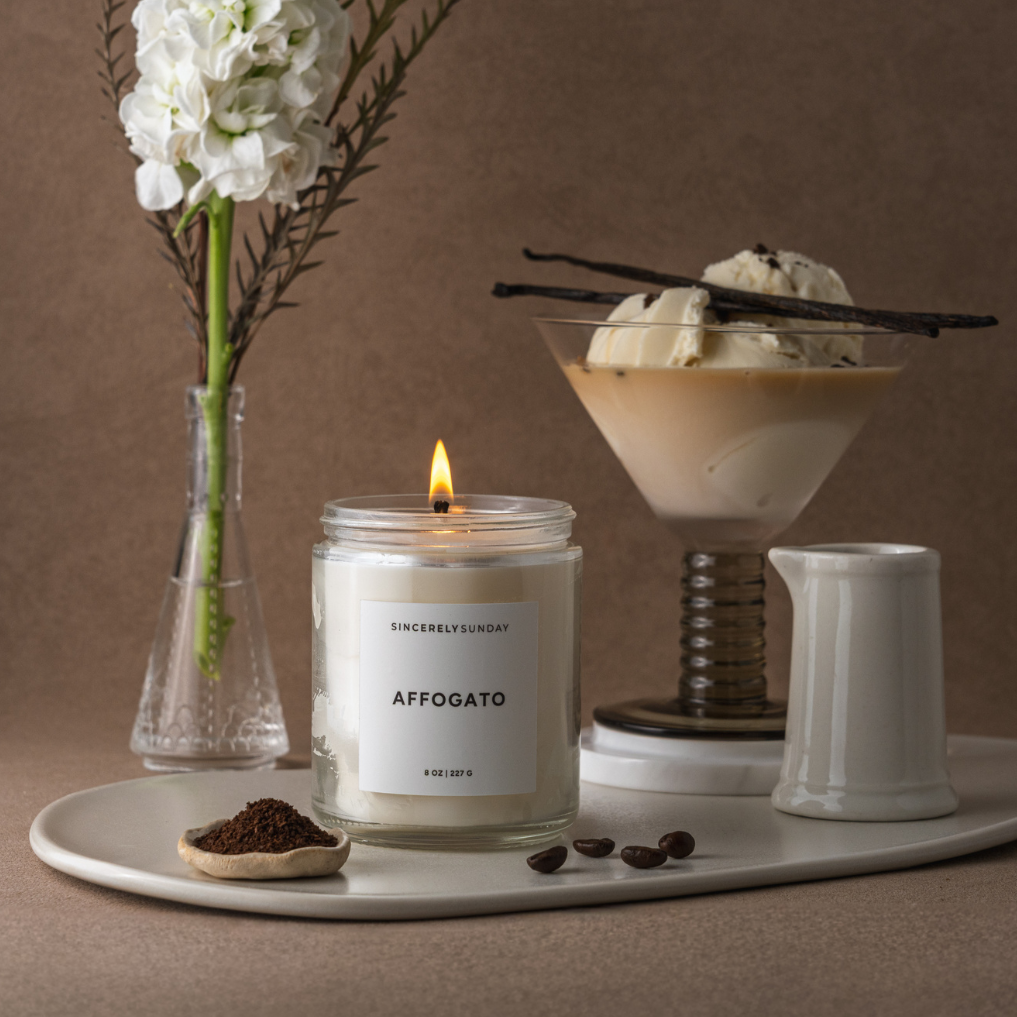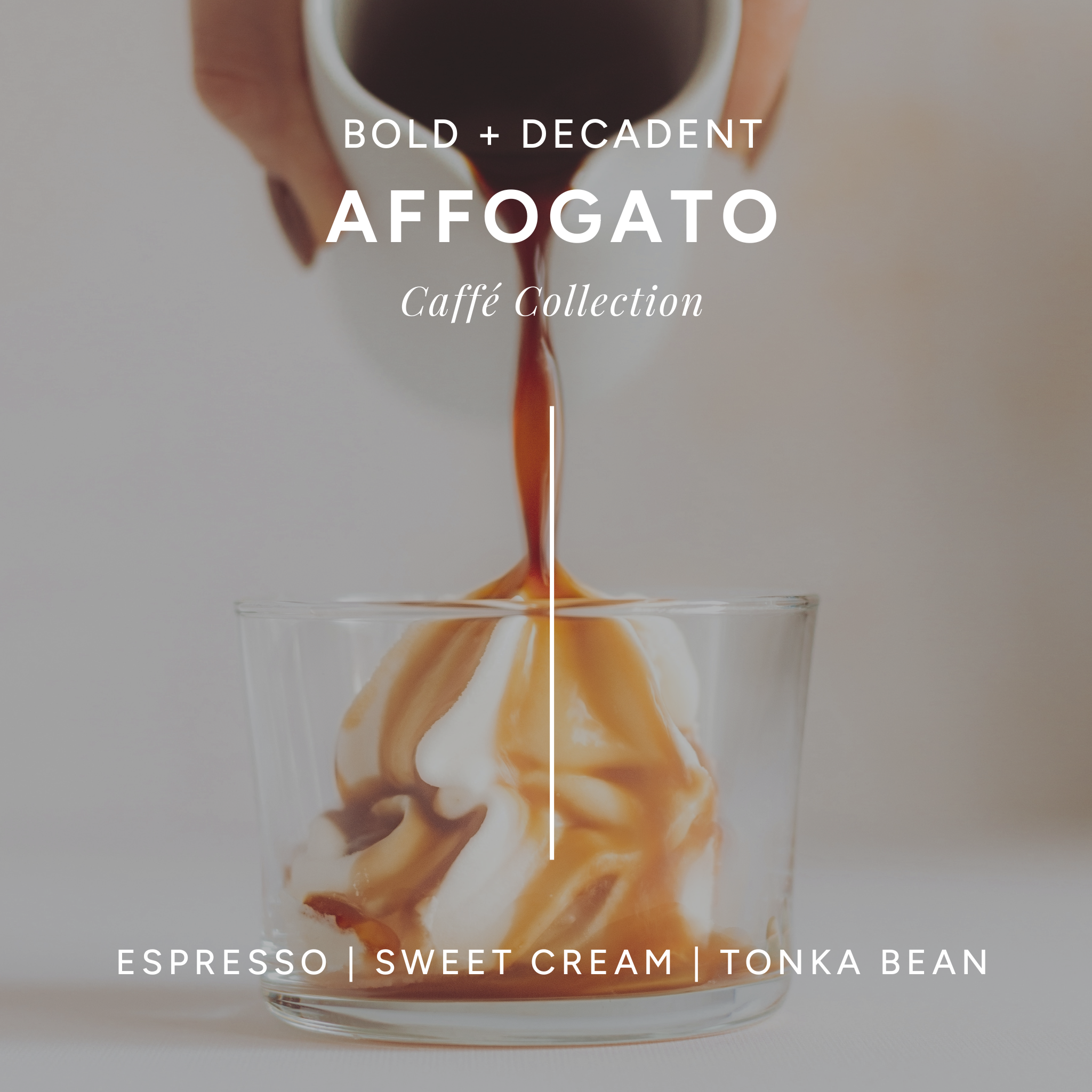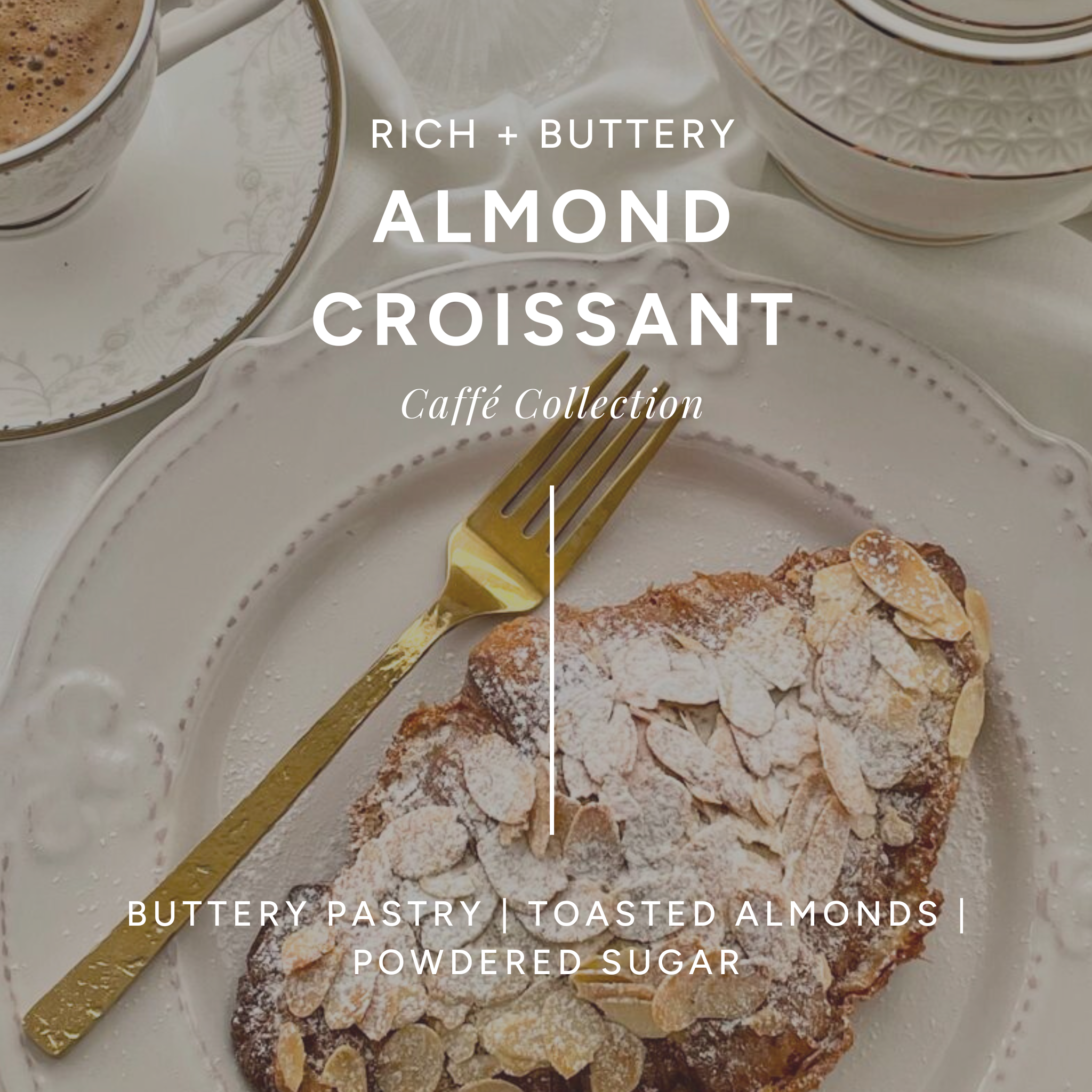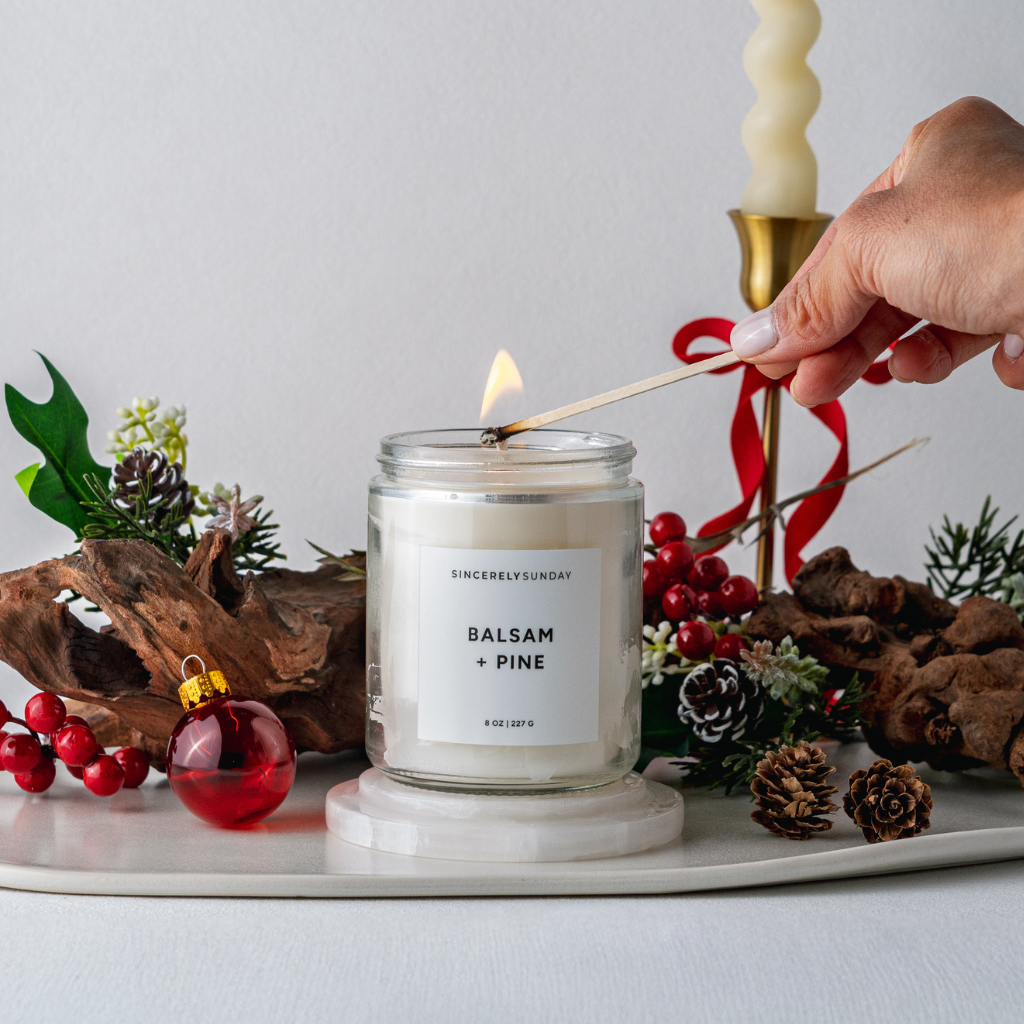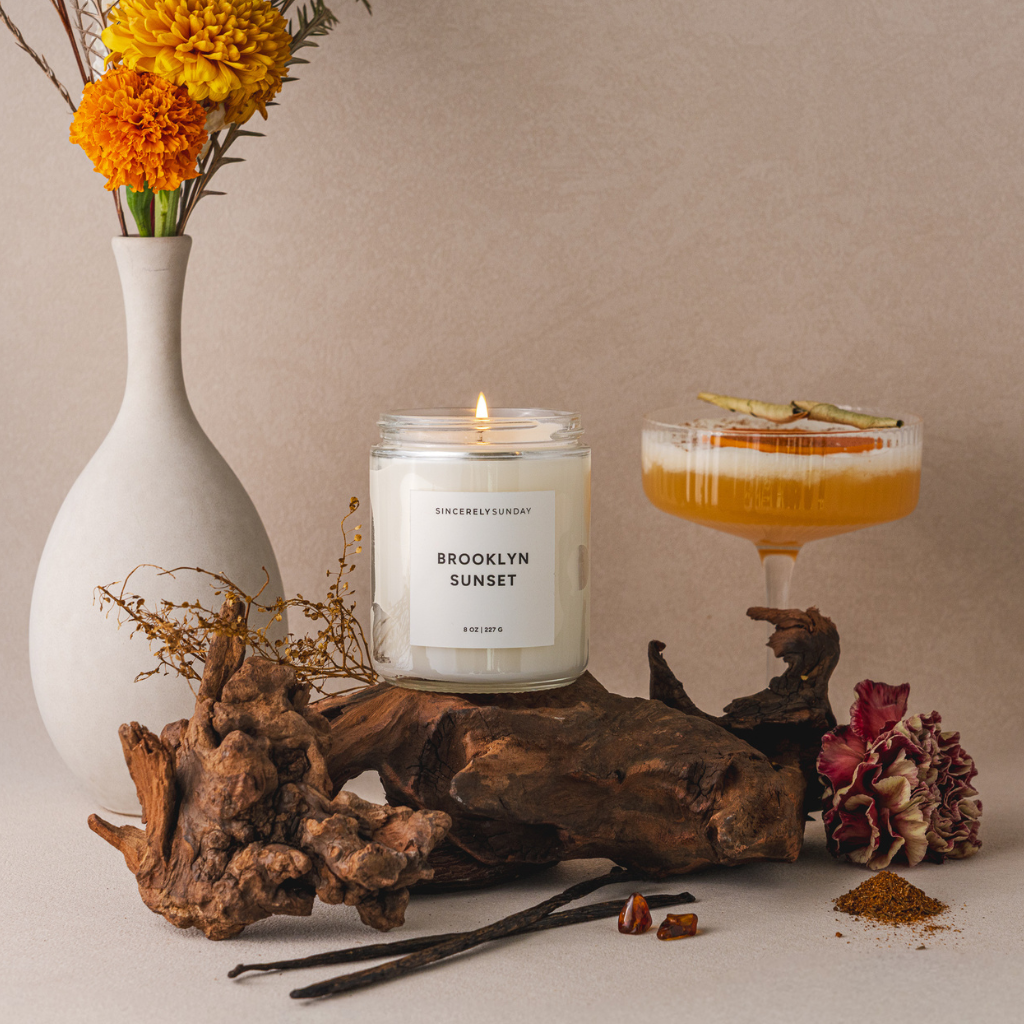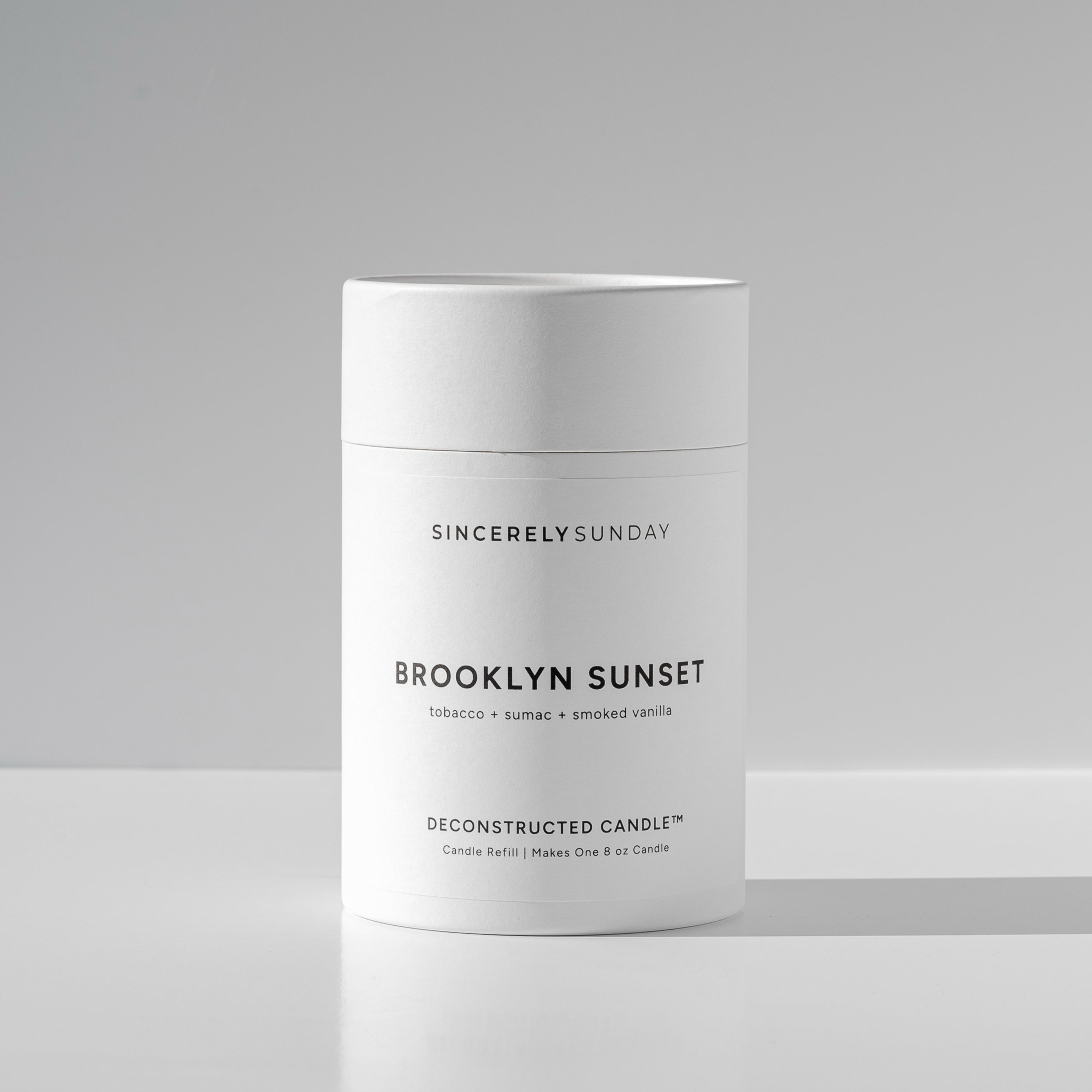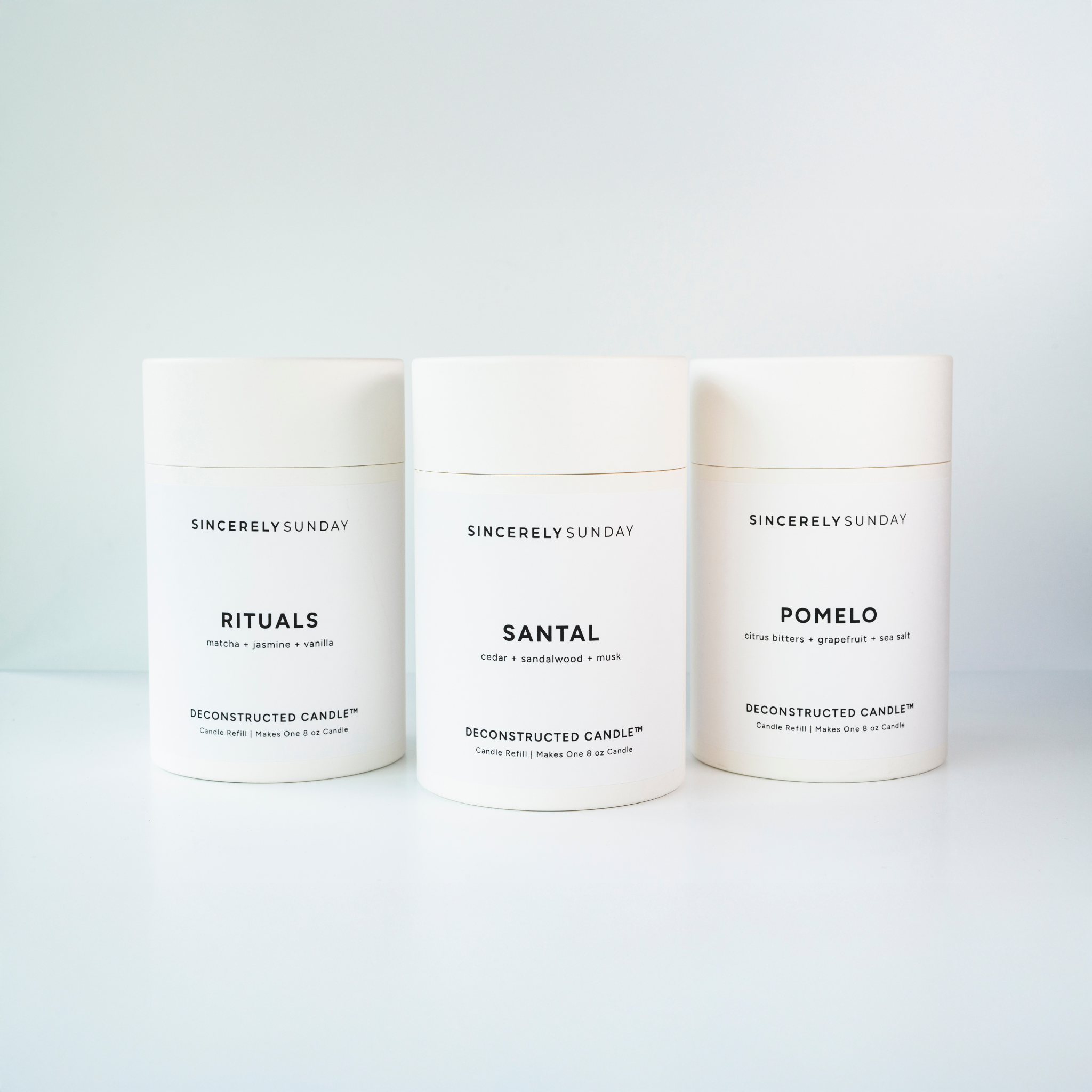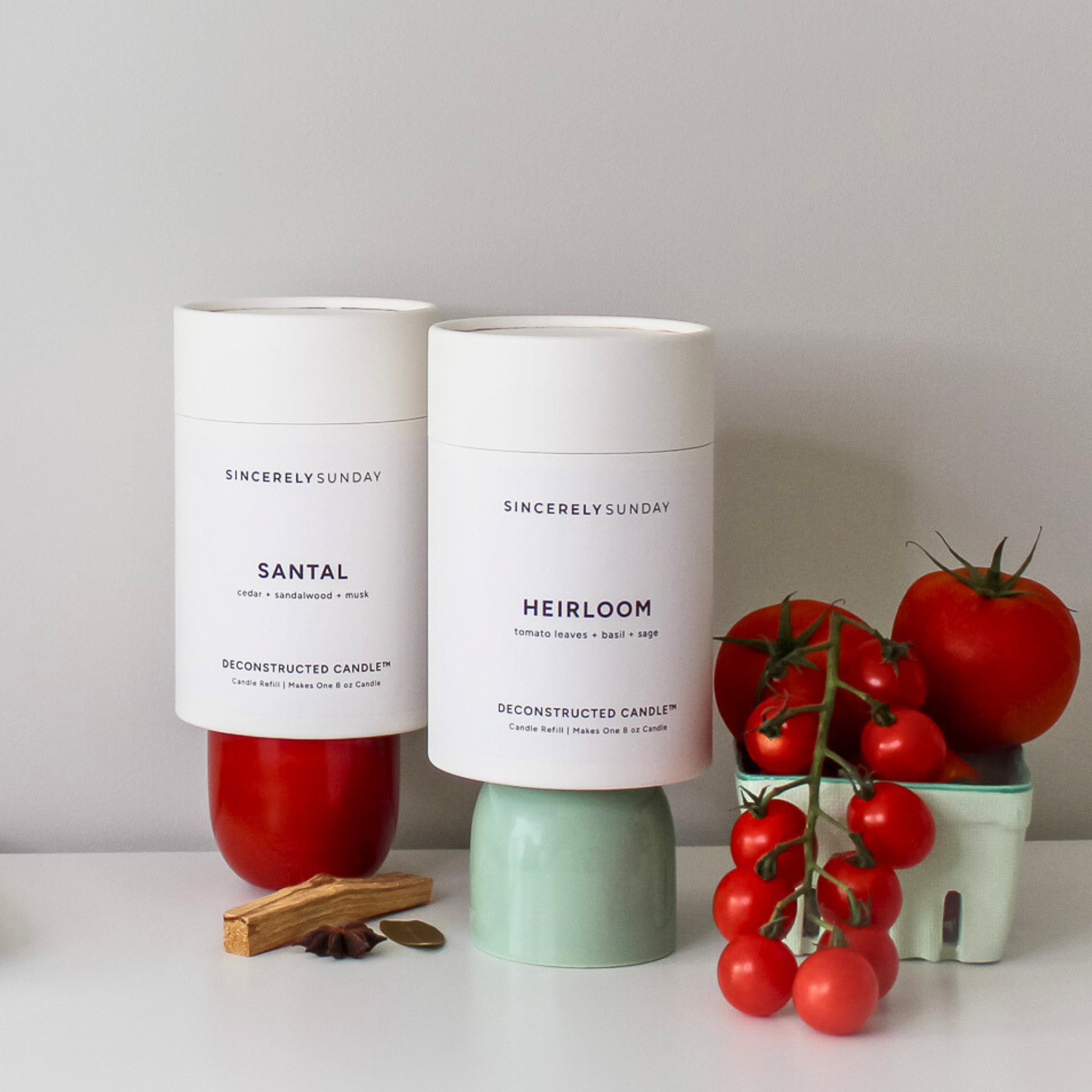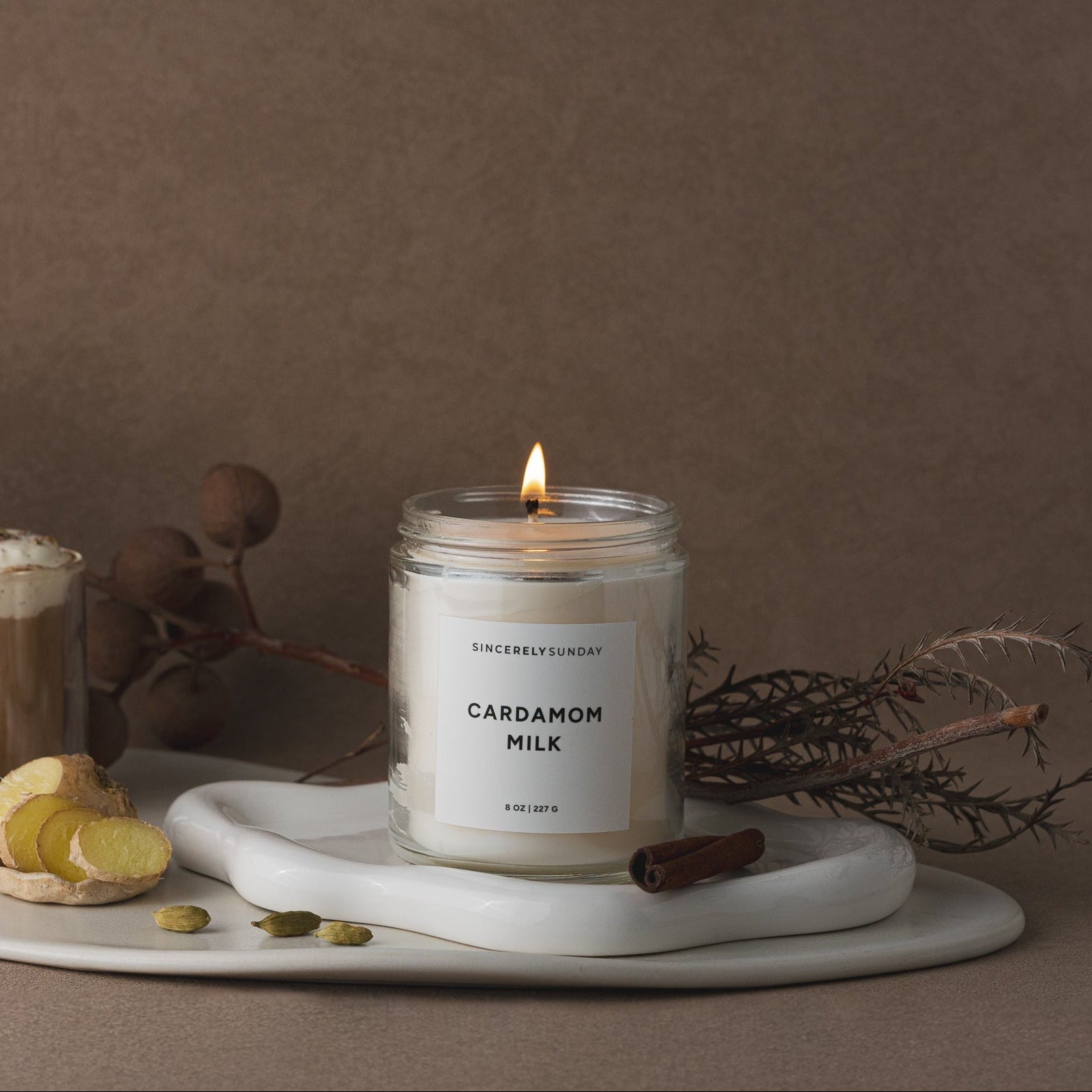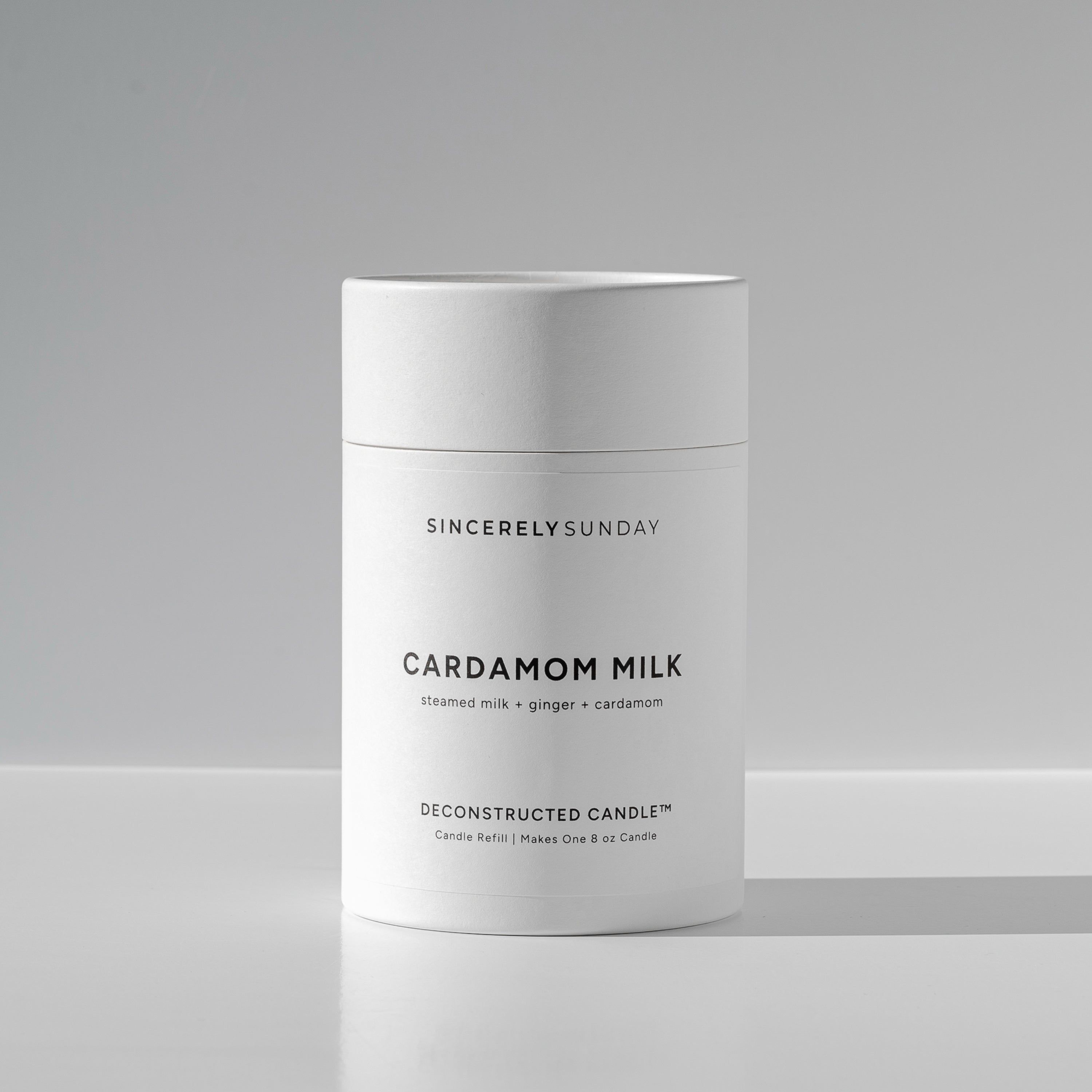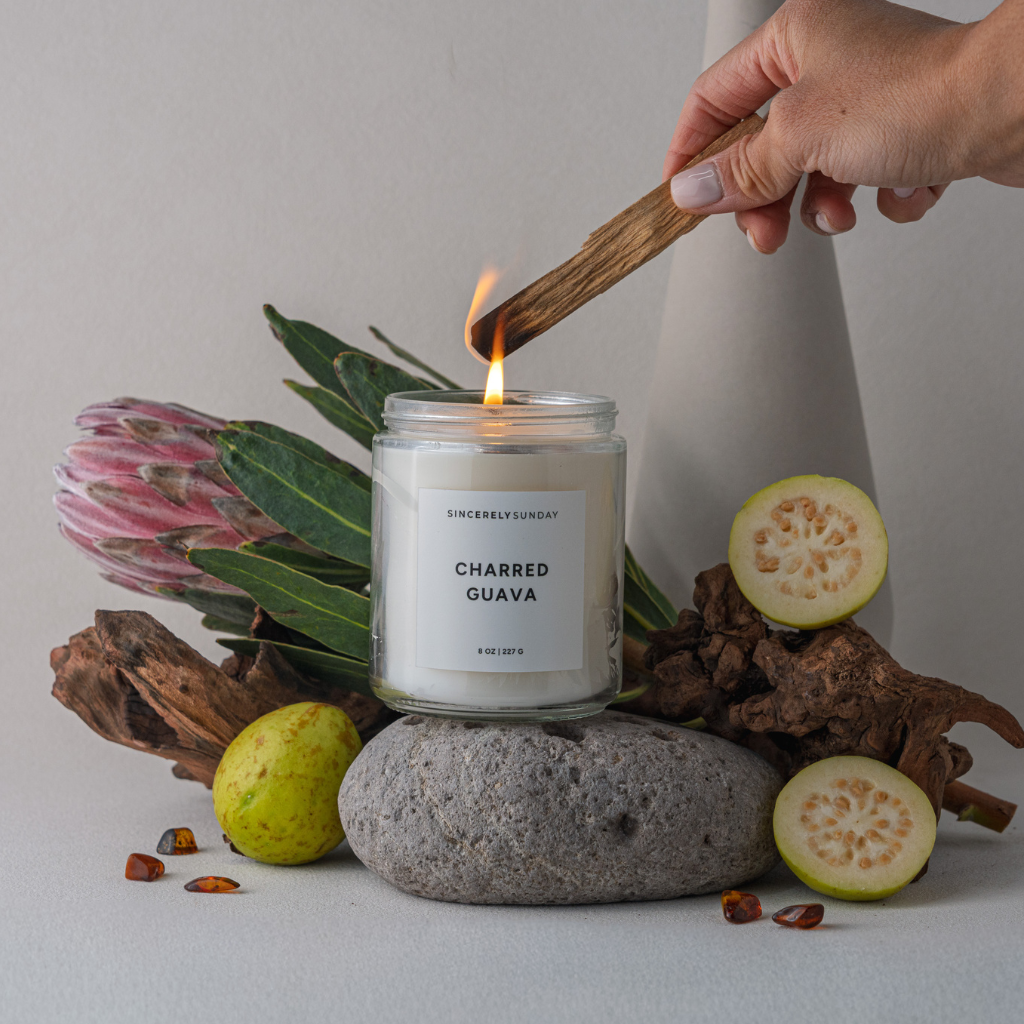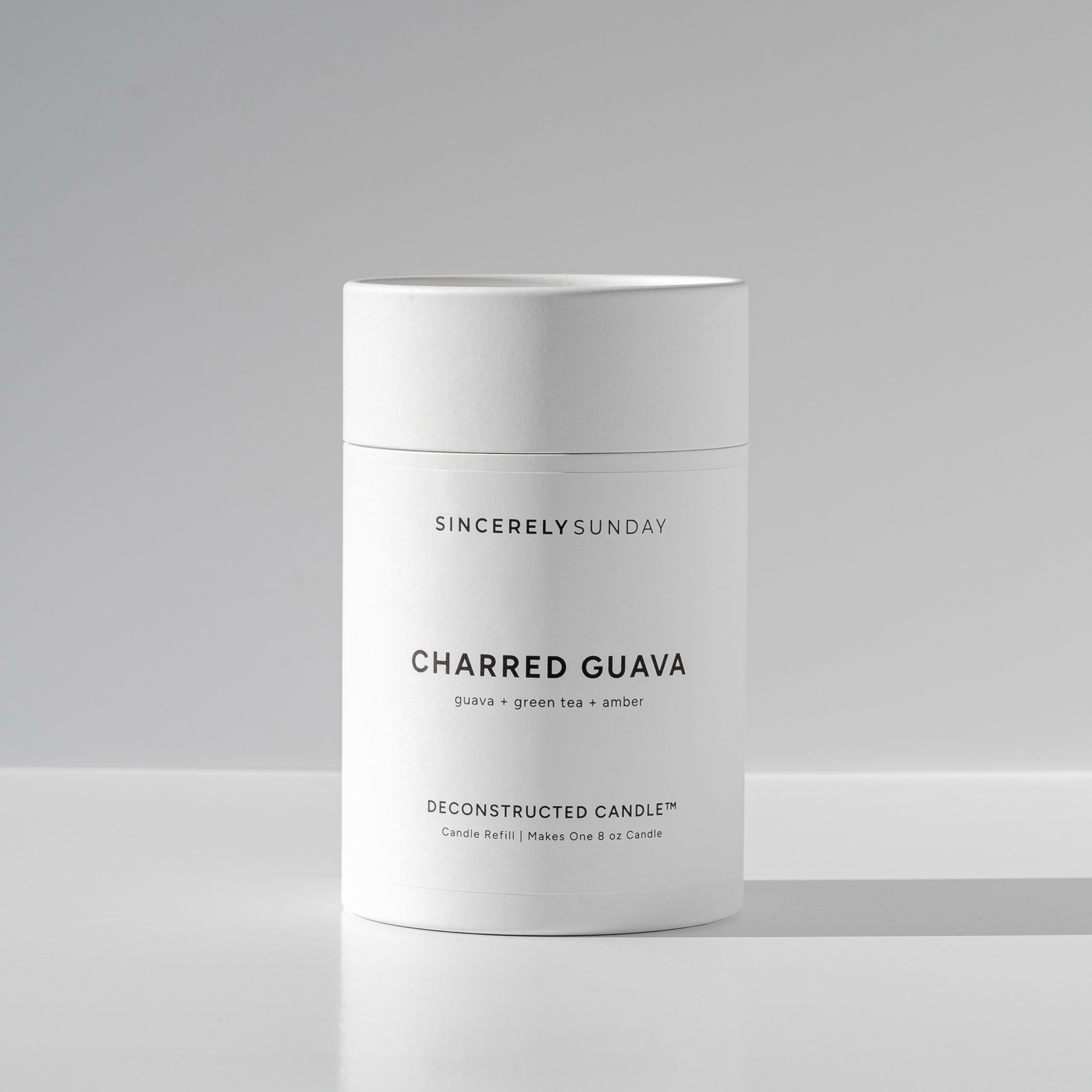Now that you know how scent is released from a candle, let’s talk about what you’re actually smelling and when.
Just like perfumes, candles are built in layers, using a structure of top, middle, and base notes. These layers aren’t just about complexity or artistry -- they also play a direct role in candle throw and how your nose experiences scent as the candle moves from cold to hot throw. Here's how it works:
Top Notes: The First Impression
Top notes are the lightest and most volatile fragrance molecules. They start evaporating even at room temperature, which is why they’re often what you smell most when the candle is unlit (cold throw). These notes tend to be bright and fresh -- think citrus, herbs, or green florals like eucalyptus.
Because they evaporate quickly, top notes tend to fade earlier during the burn. They don’t contribute much to long-term scent throw but are key to creating an inviting first impression.
Middle Notes: The Heart of the Scent
Once the candle is lit and the wax starts to warm, the middle notes come through. These molecules have a slightly higher evaporation point and begin to bloom after the top notes burn off.
Often referred to as the “heart” of the fragrance, middle notes give the candle its core identity. They help smooth the transition between fresh opening notes and the deeper base, and typically include lavender, Jasmine, and tea leaves.
You’ll usually start to notice these a few minutes into burning, as the hot throw begins to develop.
Base Notes: The Lasting Impression
Base notes have the highest molecular weight and evaporation point, which means they shine most when the candle is burning and the wax is hot. These are the notes that anchor the scent and linger in your space long after the flame is out.
Not only do base notes provide depth and warmth, but they also contribute the most to hot throw. Common base notes include vanilla, musk, sandalwood, and patchouli.
They help give a scent its longevity and fullness. If you’re after a strong candle that fills a room, candles with rich, heavy base notes are a great place to start.
PRO TIP: What you smell in the jar might not match how it smells when burning. Base-heavy candles often have a stronger throw once lit.


